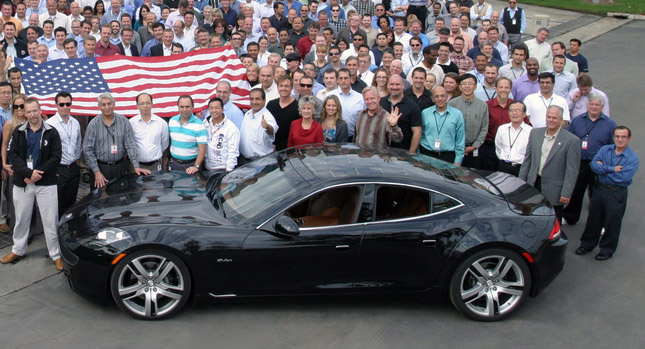Making yet another pun with Fisker and its Karma is easy. After all, the California based carmaker has faced several problems with its extended-range hybrid luxury sedan over the past couple of years. However, its latest issue is quite serious.
The U.S. Department of Energy (DOE) has frozen Fisker’s access to the federal loan it was awarded for engineering of the Karma (US$169 million) and production of the midsize Nina sedan (US$359 million), which will be priced much lower than the $100K Karma.
As a result, Fisker Automotive announced that it has stopped work on its ex-GM plant in Wilmington, Delaware, that is earmarked for the production of the Nina while it also laid off 26 employees.
“It’s been frustrating that Fisker and the Deparment of Energy weren’t able to come to terms on the revisions to the loan in time to avoid this”, said Brian Selander, a spokesman for Delaware governor Jack Markell. “I’d say that the project is on hold while the two sides try to get things sorted out.”
The DOE announced that its loans are under scrutiny by the Congress after the bankruptcy of three recipients: solar-panel manufacturer Solyndra, battery supplier for EVs Ener1 Inc and energy-storage company Beacon Power.
“Our loan guarantees have strict conditions in order to protect taxpayers”, said Energy Department spokesman Damien LaVera. “The department only allows the loan to be disbursed as the company meets certain milestones and demonstrates results.”
The Karma, which is currently produced by Valmet in Finland, failed to meet its original targets but eventually went on sale in the States. Last December, CEO Henrik Fisker said that the company had sent 225 cars to dealers and 1,200 more were in the pipline. That’s significantly less than the 7,000 deliveries Fisker had set for the Karma in 2011.
Fisker’s spokesperson Roger Ormisher said that the company didn’t have access to the loan since May. Although this obstructs operations, Ormisher said he is confident that things will eventually work out.
“They won’t release any more money given where they are at with the programs. It’s a fairly standard procedure. It’s nothing unusual. But these things take some time to go through,” said Ormisher.
Story References: Bloomberg
PHOTO GALLERY






